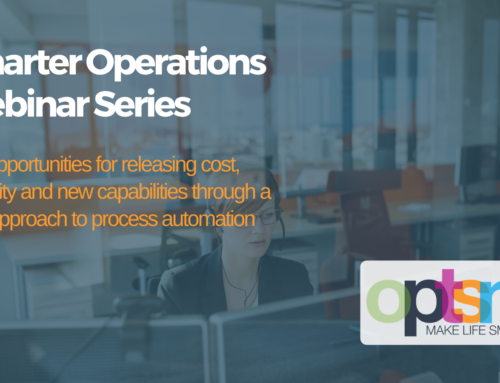Report Shows How Larger Companies are Gaining Productivity Advantages
A recent report from automation software business, Blue Prism (www.blueprism.com)* declares that 88% of decision makers see automation as a solution to the global automation problem – 92% plan to extend its use.
Well an automation software business would say that wouldn’t they. However, as we showed in our own report Productivity Lock, there is compelling evidence from many large scale companies showing how time and cost savings have been reduced by using digital workers to replace or augment human workers doing mundane repetitive tasks. Our own work quantifies the productivity opportunity at 3 hours per day.
The challenge for any organisation looking to harness the benefits of technology is always budget and capacity to manage change. Does that put this beyond the reach of the smaller firm?
But those are big companies, we do not have their resources
The drive to automate office processes has been led by larger companies who have the means to create 6 and 7 figure budgets that enable them to build specialist teams who work on initiatives that have the scale to deliver strong ROI’s over a 2 – 3 year window.
We show that, in fact, there are significant opportunities to create competitive advantage on a micro scale. These opportunities exist in most organisational settings including finance, sales, logistics and marketing. Micro Outsourcing 2 – 3 hours of even 5 people involved in a process is operationally and commercially feasible, creating an additional capacity of an FTE and making the working environment of 5 people more engaging and enjoyable.
Overcoming Change Inertia
All organisations are, to some extent, reluctant to move away from the status quo. The harder change appears, the more difficult the introduction. The effects of the C19 virus has somewhat changed these calculations for those forced to reassess what their new normal is.
An outsourced business model means there is no upfront costs associated with Micro Outsourcing. Decisions are made with full visibility of the costs and time associated with the current way of working and a fixed price for new approach.
Implementation is completely non invasive, requiring no change to the way people work or the technology deployed. The digital worker uses the keyboard in exactly the same way as the human, just much faster and more accurately. Importantly, the automated process is delivered in 4 – 6 weeks – making this a ‘small steps, quick wins’ initiative
The Right Race?
Competitive pressures relentlessly drive all organisations to evolve and adapt. At the same time, human workers’ tolerance for ‘boring work’ is rapidly decreasing as their need to be creative and value increases.
As the desire for new levels of convenience have transformed how we shop, holiday and communicate, is it realistic to imagine that work environments in the next months and years will remain static?
Everyone will seek to find marginal gains and augmenting your loyal, skilled and knowledgeable workforce with robots to do their heavy lifting tasks is a real option for organisations of all sizes.
Micro-outsourcing levels the playing-field and creates the opportunity for smaller firms to make productivity gains, reduce costs and increase capacity / capability. It plays to their strengths of moving quickly to seize opportunities.






Leave A Comment